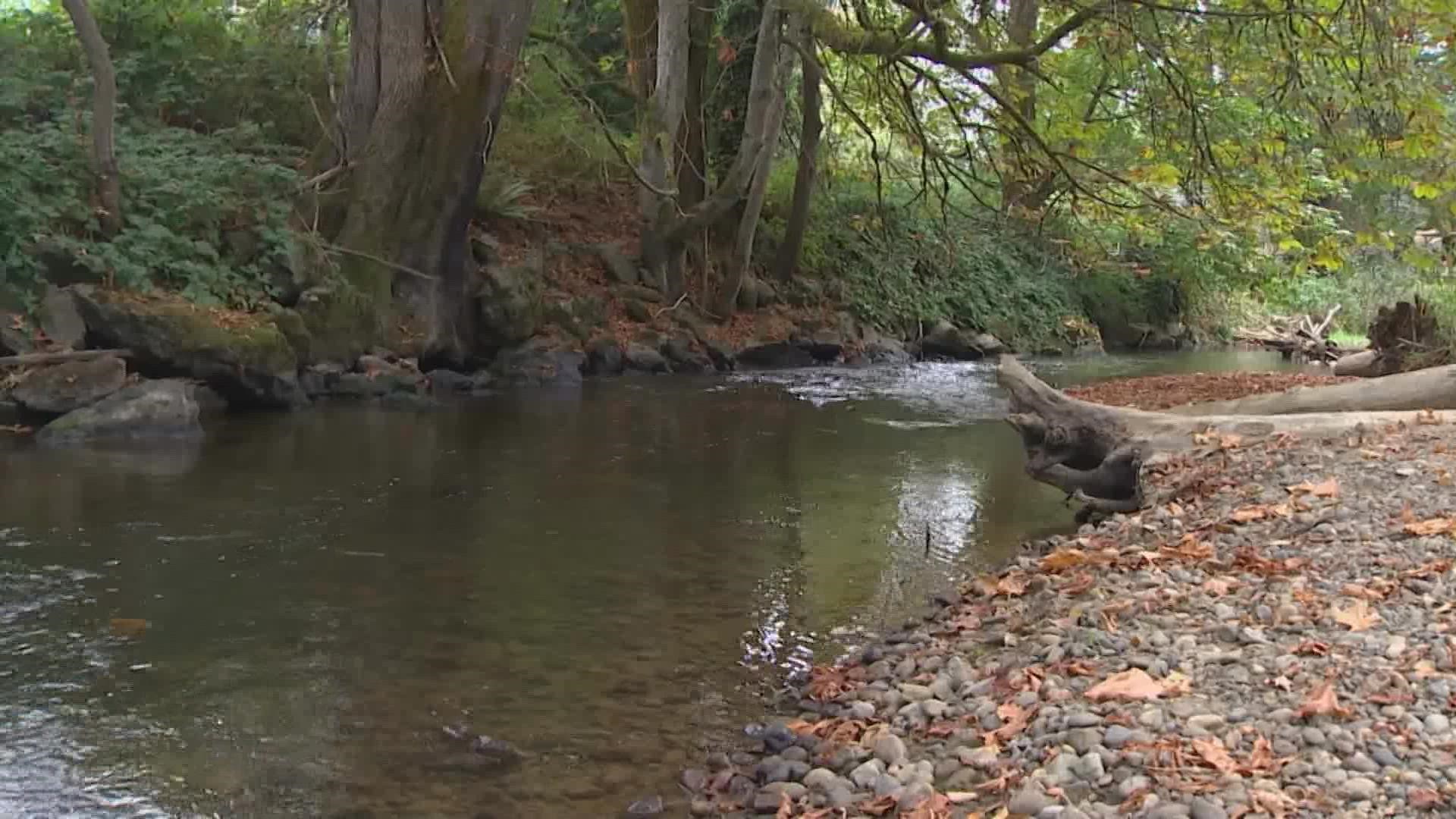SEATTLE — Salmon migration and spawning peaks in October in western Washington, but the record-breaking warm and dry summer in 2022 is having an impact on salmon numbers.
All salmon first pass through the Ballard Locks before returning to the streams and rivers where they were born to lay their eggs and eventually die, thus completing the salmon lifecycle.
Jason Mulvihill-Kuntz, the salmon recovery manager for the Lake Washington/Cedar/Sammamish Watershed Salmon Recovery Council, said they’re seeing good numbers of fish passing through the Ballard Locks, but the fish are not moving to the streams and rivers yet, which he believes could be because of the warm and dry summer.
Salmon need two big factors to successfully migrate: cold water and a lot of it. Mulvihill-Kuntz believes the salmon might be waiting in lakes until temperatures cool and rain falls, which is delaying their migration.
“We’ve counted a lot of them there this year but not as many as we’d hoped have showed up in the river yet,” said Mulvihill-Kuntz. “So, it’s likely that they’re waiting for those rains to come and create those flows and the temperatures that we need.”
Charlotte Spang, the field outreach coordinator at the Seattle Aquarium, echoes this trend, pointing out that these fish know how to navigate through both salt and fresh water to complete their lifecycle.
“They’re traveling through a variety of different habitats and each one of those habitats needs to provide exactly what a salmon needs in order to thrive, survive and come back here to reproduce and start the whole process over again,” said Spang.
However, even though the salmon are slow to move into rivers this year, Mulvihill-Kuntz pointed out that this could be corrected in years to come and that the impact won’t be known for years to come. He said because the salmon that are spawning are anywhere from 2 to 4 years old, it won’t be known if the warm and dry summer has had an impact until multiple years when the fish are supposed to return.
Mulvihill-Kuntz also added that salmon have learned to adapt, so one bad year won’t mean the end.
“When we have one bad year it’s not that big a deal, when we have one, two, three, four, five bad years and all in a row, that’s when it’s going to be a bigger problem because it’s going to take out that adaptability that they’ve built into their genes,” Mulvihill-Kuntz said.
Both researchers said it’s up to the public to help the salmon population as much as possible. Mulvihill-Kuntz said about 43,000 salmon have passed through, but about 350,000 would be needed in order to consider their rehab “successful” and be able to open a fishery on Lake Washington.
Mulvihill-Kuntz and Spang also both encourage people to try to see the salmon migrating with their own eyes because awareness is key to making a difference.
“To see one of these gigantic salmon is pretty amazing and really is part of what it means to be a Pacific Northwesterner, and if we lose that, we’ll have lost something of ourselves really,” said Mulvihill-Kuntz.
The "Salmon SEEson" website has details on where and when to best view salmon.

